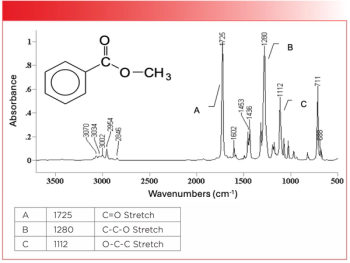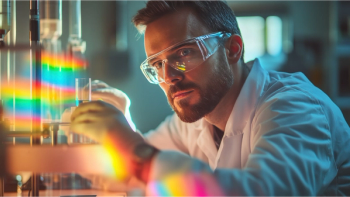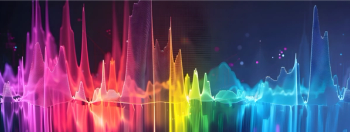
- The Infrared Spectroscopy Terminology Guide
- Volume 36
- Issue s2
Introduction to the Guide
This guide includes many terms related to infrared instrumentation, sampling, measurement techniques, basic nomenclature and concepts, data processing, and applications of infrared instrumentation. In addition, this guide includes some data processing terms, a few statistical data analysis terms, and the essential chemometric terms for typical data preprocessing and calibration.
Once again, the enthusiastic response to the molecular spectroscopy and Raman spectroscopy terminology guides has led the editors of Spectroscopy to develop a similar guide focusing on those terms related specifically to infrared spectroscopy, and including general molecular spectroscopy and some few complementary Raman terms. This guide includes many terms related to infrared instrumentation, sampling, measurement techniques, basic nomenclature and concepts, data processing, and applications of infrared instrumentation. In addition, this guide includes some data processing terms, a few statistical data analysis terms, and the essential chemometric terms for typical data preprocessing and calibration.
"The Infrared Terminology Guide" is a comprehensive, yet practical set of definitions for topics of interest to molecular spectroscopists and those specifically using infrared spectroscopy in their daily work routines. This guide includes the various types of infrared spectroscopy techniques and many terms related to the applications of infrared spectroscopy instruments. This guide includes over 250 definitions of spectroscopy terms in sufficient detail to provide readers with a reasonable understanding of the concepts covered.
In addition to using this guide, spectroscopists may also wish to know the definitions given by various organizations for many spectroscopic terms; for these, one may refer to The American Chemical Society (ACS) Style Guide, The American Society for Testing and Materials (ASTM) terminology guides, United States Pharmacopoeia (USP) documents, or the International Union of Pure and Applied Chemistry (IUPAC) guidance documents.
This terminology guide did not attempt to be all-inclusive in its coverage. For example, we have elected not to attempt to cover every possible term used for infrared spectroscopic instrumentation, measurement, data handling, and validation, nor to go too deep into theoretical or complex infrared phenomena—although aspects of spectral interpretation are briefly covered. Instead, we have chosen to include most terms that may be encountered where infrared spectroscopy is in general laboratory use.
Infrared measurement methods included are circular dichroic measurements, internal reflection (ATR), diamond anvil cell (DAC), diamond compression cell (DCC), diamond ATR, diffuse reflectance (DRIFTS), Fourier transform infrared (FT-IR), and near infrared (FT-NIR). Fourier transform ultraviolet (FT-UV), gas chromatography-infrared (GC-IR, GC-FT-IR), grazing angle infrared reflectance, hyperspectral imaging (HSI), step-scan measurements, IRRAS (infrared reflection absorption spectroscopy), microscopy, integrating sphere reflection, kinetic measurements, PAS (photoacoustic spectroscopy), polarization modulation measurements, rapid scanning, and reflectance measurements are also included. Also found are thermogravimetric (TGA-IR, TGA-FT-IR), timedrive measurements, two-dimensional (2D) correlation spectroscopy, VCD (vibrational circular dichroism), VLD (vibrational linear dichroism). Finally, a few data processing and spectral manipulation terms are included.
This glossary is intended be helpful to both novice and advanced infrared spectroscopists.
Newsletter
Get essential updates on the latest spectroscopy technologies, regulatory standards, and best practices—subscribe today to Spectroscopy.




